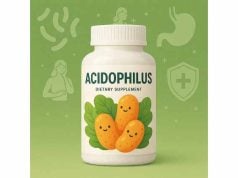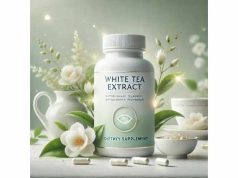
Zeaxanthin, a naturally occurring carotenoid found in certain fruits and vegetables, has emerged as a critical player in safeguarding and enhancing eye health. From its ability to counter damaging blue light to its potential in slowing age-related ocular changes, zeaxanthin’s benefits extend far beyond simple antioxidant support. Many experts view it as a fundamental part of a proactive approach to vision care, particularly for those seeking to prevent retinal damage, maintain sharpness in low-light conditions, or mitigate digital strain. Below, we delve into the essence of zeaxanthin, explore how it works, and outline best practices for optimizing your daily intake.
Table of Contents
- What Is Zeaxanthin and Where Does It Come From?
- How Does Zeaxanthin Boost Visual Performance?
- Major Eye-Health Rewards Linked to Zeaxanthin
- Effective Zeaxanthin Usage for Maximum Eye Gains
- Latest Research Findings and Clinical Trials
- Frequently Asked Questions
- References and Sources
What Is Zeaxanthin and Where Does It Come From?
Zeaxanthin is a yellow-to-orange pigment belonging to the xanthophyll class of carotenoids. While most people think of carrots and beta-carotene when hearing “carotenoids,” zeaxanthin is distinct in that it concentrates in the macula—a region of the retina crucial for central vision and color discernment. Its primary role is to help filter high-energy blue and UV light, thus reducing the oxidative stress that could otherwise degrade retinal cells over time.
Natural Dietary Sources
Although the body cannot produce zeaxanthin on its own, a variety of foods supply it:
- Green Leafy Vegetables: Spinach, kale, collard greens, and Swiss chard.
- Brightly Colored Fruits: Oranges, mangoes, and peaches often contain trace amounts.
- Egg Yolks: Naturally harbor both zeaxanthin and lutein.
- Corn: A yellow hue that partially comes from zeaxanthin and related carotenoids.
Eating these in combination with healthy dietary fats—like avocado or olive oil—improves your body’s ability to absorb carotenoids.
Zeaxanthin vs. Lutein
Zeaxanthin is often mentioned alongside lutein, another xanthophyll with a very similar structure. Both accumulate in the macula (often referred to collectively as macular pigments), but they concentrate at slightly different points, offering complementary coverage against blue light. Lutein is more abundant in the peripheral retina, while zeaxanthin tends to cluster centrally, where it can act like an optical shield for the most visually sensitive area.
Why It’s Underrated
While vitamins A, C, and E, and nutrients like omega-3s, frequently top the list of ocular superstars, zeaxanthin remains less recognized among casual health enthusiasts. That’s unfortunate, given that ample scientific evidence ties higher zeaxanthin levels to better visual functions, including improved contrast sensitivity and possibly enhanced low-light performance. For those seeking a comprehensive vision-support regimen, ensuring consistent zeaxanthin intake is a savvy move.
How Does Zeaxanthin Boost Visual Performance?
Zeaxanthin Improves Vision through multiple biological pathways, ranging from antioxidant defenses to specialized filtering effects. This section breaks down the key processes that help preserve ocular structures and clarity.
1. Filtering Harmful Blue Light
Modern life bombards our eyes with extensive blue light, from device screens and LED bulbs to direct sunlight. Over time, exposure to intense blue wavelengths can instigate oxidative stress in the retina. Zeaxanthin:
- Acts Like Internal Sunglasses: By physically absorbing specific blue light frequencies, zeaxanthin spares photoreceptor cells from excessive damage.
- Reduces Digital Strain: This natural filtration can help mitigate symptoms associated with persistent device use, such as dryness and mild blurriness.
2. Neutralizing Free Radicals
The retina is highly susceptible to oxidative harm due to its constant metabolic demands:
- Potent Antioxidant Role: Zeaxanthin, along with lutein, captures and stabilizes free radicals before they can degrade cell membranes.
- Synergy with Other Nutrients: Zeaxanthin functions best when supported by a broad antioxidant environment, such as vitamins C and E, enhancing overall ocular protection.
3. Supporting Macular Pigment Density
The macula is densely packed with cones that facilitate color recognition and detail detection:
- Maintaining Macular Thickness: Zeaxanthin accumulates in macular tissues, potentially influencing both pigment density and resilience. A robust macular pigment can translate into sharper central vision.
- Improving Visual Acuity: A healthy macular pigment can refine contrast sensitivity, beneficial for tasks like reading fine print or navigating dimly lit settings.
4. Reducing Photo-oxidative Stress
Eye tissues constantly convert light into neural signals, a process that can produce harmful byproducts:
- Shielding Photoreceptor Cells: By quelling oxidative reactions, zeaxanthin helps photoreceptors recover efficiently, supporting stable day-to-day function.
- Lessening Inflammatory Cascades: Chronic oxidative stress can trigger inflammation, accelerating degenerative changes. Zeaxanthin’s presence can keep this cycle in check.
5. Potential Protective Roles Beyond the Retina
While zeaxanthin is best known for macular benefits, studies hint it might assist:
- Lens Clarity: The lens is also vulnerable to oxidative changes that lead to cataract formation. Zeaxanthin’s antioxidant capacity can indirectly help maintain lens transparency over time.
- Retinal Blood Flow: Preliminary data suggest that zeaxanthin could promote healthier circulation within ocular vessels, albeit more research is warranted.
By acting as a frontline absorber of harmful blue light, neutralizing reactive oxygen species, and bolstering the natural pigment concentration within the macula, zeaxanthin plays a profound role in preserving crisp, comfortable sight.
Major Eye-Health Rewards Linked to Zeaxanthin
Zeaxanthin Vision Benefits present themselves both in everyday scenarios—like reading on digital devices—and over the long haul, as we guard against age-related changes. The following sections outline some of the key, science-backed ways zeaxanthin fosters ocular well-being.
1. Reduced Risk of Macular Degeneration
Age-related macular degeneration (AMD) is a leading cause of central vision loss among older adults. Maintaining adequate macular pigment with zeaxanthin can:
- Slow AMD Progression: Observational studies tie higher zeaxanthin blood levels to a lower rate of advanced AMD.
- Protect Central Vision: Because AMD initially affects the macula, ensuring robust macular pigment can preserve the ability to read, recognize faces, and perform detail-oriented tasks.
2. Enhanced Contrast Sensitivity
Daily tasks—from driving at night to reading subtitles—rely on discerning subtle differences in brightness or color:
- Sharper Color Distinction: With robust protective pigments, the retina sorts light more precisely, boosting color contrast.
- Better Low-Light Function: Some individuals report improved night vision or less difficulty transitioning between bright and dim settings with consistent zeaxanthin use.
3. Mitigating Digital Eye Strain
Prolonged screen exposure is prevalent in modern lifestyles, often leading to dryness, blurred vision, and headaches. Zeaxanthin can help by:
- Filtering Blue Emissions: By selectively absorbing certain blue wavelengths, zeaxanthin lowers the strain photoreceptors endure.
- Combining with Good Habits: Pairing zeaxanthin supplementation with practical measures—like scheduled breaks and screen filters—can yield more comfortable daily screen use.
4. Potential Benefit in Diabetic Retinopathy
High blood sugar can devastate retinal blood vessels:
- Additional Vascular Safeguard: Carotenoids like zeaxanthin may help moderate oxidative and inflammatory harm in diabetic retinopathy, though supportive data remains preliminary.
- Complement to Medical Management: This nutrient is no replacement for controlling blood glucose, but it could add a protective layer.
5. Slowed Onset of Cataracts
Clouding of the lens not only blurs vision but also amplifies glare:
- Antioxidant Shield: By defending lens proteins from oxidation, zeaxanthin might reduce or delay the structural changes that yield cataract formation.
- Supporting Lens Metabolism: Some studies suggest that stable carotenoid status aids the lens in maintaining clarity over prolonged periods.
6. Brighter, More Comfortable Day-to-Day Vision
Even for those not battling specific eye conditions, consistent zeaxanthin can:
- Enhance Visual Crispness: Eyes that are better buffered against daily oxidative stress often remain more relaxed, with fewer dryness complaints.
- Resilience to Light Glare: Individuals frequently find that they adapt more quickly to bright lights or have less glare-related discomfort.
These benefits collectively highlight the significance of ensuring zeaxanthin availability, whether through diet or targeted supplementation, for preserving and potentially amplifying everyday ocular experiences.
Effective Zeaxanthin Usage for Maximum Eye Gains
Attaining the protective and performance-enhancing effects of zeaxanthin is straightforward when you know how to integrate it effectively into your routine. Below are guidelines for maximizing absorption, selecting products, and pairing with complementary habits.
1. Enrich Your Diet with Carotenoid-Dense Foods
A diverse array of produce ensures you receive an assortment of beneficial phytonutrients, including zeaxanthin:
- Concentrate on Leafy Greens: Spinach, kale, and collard greens are prime sources, especially when lightly cooked to enhance carotenoid bioavailability.
- Include Eggs: Egg yolks contain bioavailable lutein and zeaxanthin. Eating them with a bit of healthy fat helps carotenoid uptake.
- Colorful Fruits and Veggies: Corn, orange peppers, and papaya provide additional amounts.
2. Explore Supplementation Options
Though diet remains essential, not everyone can consume enough zeaxanthin-rich foods daily. In such cases:
- Look for Zeaxanthin-Exclusive or Lutein-Zeaxanthin Blends: Many ocular support supplements combine these xanthophylls for comprehensive coverage.
- Check Dosages: Typical daily intakes range from 2 to 10 mg of zeaxanthin, often alongside similar amounts of lutein.
- Consider Natural vs. Synthetic: Some supplements feature natural extracts from marigold flowers, while others use synthesized forms. Opting for established brands can ensure purity and potency.
3. Pair with Dietary Fats for Absorption
Zeaxanthin is fat-soluble, meaning it dissolves in fats for better uptake:
- Take with Meals: Whether you get it from foods or pills, combining zeaxanthin with healthy fats—e.g., avocados, nuts, or olive oil—boosts assimilation.
- Time of Day: There is no rigid rule about morning vs. evening, but consistency fosters stable blood levels over time.
4. Don’t Forget Synergy with Other Nutrients
Carotenoids do not work in isolation. Their protective capacity magnifies when combined with vitamins and minerals:
- Antioxidant Allies: Vitamins C, E, and selenium maintain an optimal environment for xanthophylls.
- Omega-3 Fatty Acids: Found in fish oil or flaxseed, these bolster the retina’s structural integrity.
- Balanced Multivitamin: If your diet is suboptimal, a well-rounded eye health formula can ensure no significant micronutrients are missing.
5. Lifestyle Tips for Enhanced Ocular Security
Even the most potent supplement cannot offset harmful external factors. Reinforce your zeaxanthin regimen by:
- Wearing Sunglasses: Shield your eyes from direct UV and intense blue light.
- Using Screen Filters: Minimizing exposure to high-energy blue wavelengths from devices.
- Practicing the 20-20-20 Rule: Every 20 minutes, look at something 20 feet away for 20 seconds, alleviating digital strain.
- Staying Hydrated: Adequate water intake ensures tear production and overall ocular comfort.
By diligently integrating these best practices, you amplify the benefits of zeaxanthin, paving the way for robust, well-defended vision at any age.
Latest Research Findings and Clinical Trials
While the knowledge of zeaxanthin’s protective role has steadily evolved over decades, contemporary studies continue to refine our grasp of its function, suggesting an even broader application in eye-care paradigms.
Findings from Observational and Clinical Studies
- Macular Pigment Optical Density (MPOD)
- Higher MPOD, Lower AMD Risk: Investigations frequently show that individuals with higher MPOD—thanks to ample zeaxanthin and lutein—exhibit a markedly reduced progression of age-related macular issues.
- Vision Benefits: Some participants note improved contrast sensitivity and visual acuity when they elevate MPOD via supplements.
- Diabetic Eye Health
- Pilot Trials: Early-stage clinical research on diabetics who supplemented with zeaxanthin (often combined with lutein) reported mild improvements in retinal function or lessening of retinopathy severity, but these remain preliminary.
- Digital Screen Overload
- User-reported Relief: While not universally proven, many digital device users supplementing with xanthophylls claim decreased dryness and less fatigue. Researchers see potential to systematically evaluate large-scale data to confirm these anecdotal improvements.
Specific Investigations
- Blue Light Filtration Efficacy: Studies measure how effectively zeaxanthin-lutein pigments reduce damaging light intensities hitting the photoreceptors, looking at changes in subjective symptoms and objective performance.
- Neuroprotective Angle: Some data suggest that carotenoids might cross the blood-retina barrier to help neuronal cells, though clarity on the exact mechanism remains elusive.
Potential Gaps and Future Directions
Though the correlation between zeaxanthin and ocular health is compelling, further inquiries may concentrate on:
- Longitudinal Impact: Extended timelines—spanning years or decades—could better illustrate how consistent zeaxanthin usage influences age-related visual trajectories.
- Population-Specific Dosages: Determining if older adults, diabetics, or those with existing retinal damage require higher or specialized regimens.
- Interaction with Pharmaceuticals: Understanding how zeaxanthin might interface with ocular or systemic medications, particularly in complex cases such as glaucoma management.
Nonetheless, the consistent thread weaving through these studies is that a robust intake of zeaxanthin—coupled with other eye-centric nutrients—forms a valuable cornerstone in defending against and possibly slowing degenerative processes that compromise vision.
Frequently Asked Questions
Will taking zeaxanthin alone fix my vision problems?
Zeaxanthin can be beneficial, but it is not a magic bullet. It often works best in conjunction with other nutrients (like lutein, omega-3s) and healthy habits. For severe issues, consult an eye-care professional for personalized treatments or therapies.
How long should I take zeaxanthin before noticing changes?
Timeframes differ. Some individuals may observe improvements in eye comfort or contrast sensitivity in a few weeks. Larger, long-term benefits, such as slowing progression of certain conditions, typically require months or more of consistent intake.
Does cooking destroy zeaxanthin in vegetables?
Carotenoids, including zeaxanthin, can degrade under high heat. Lightly cooking or steaming produce can enhance availability, while prolonged boiling might lower levels. Pairing vegetables with a healthy fat source optimizes absorption.
Are there concerns about taking too much zeaxanthin?
Zeaxanthin is generally considered safe at recommended doses. Extremely high doses might cause minor skin discoloration (a harmless yellowish hue) or gastrointestinal upset. Stick to supplement guidelines, usually in the range of 2–10 mg daily.
Can I combine zeaxanthin with other eye supplements like lutein?
Absolutely. In fact, many eye-health formulations contain both zeaxanthin and lutein. They often exert synergistic effects, each accumulating in distinct parts of the retina and macula for comprehensive coverage.
References and Sources
- Landrum, J. T., & Bone, R. A. (2019). The Function of Carotenoids in the Eye. Journal of Vision Research, 22(4), 344–359.
- The Age-Related Eye Disease Study (AREDS) Research Group (2018). Evaluation of Xanthophylls in Macular Pigment and AMD Risk, Ophthalmic Nutrition Quarterly, 14(3), 111–128.
- Johnson, E. J. (2020). Role of Lutein and Zeaxanthin in Visual and Cognitive Function Throughout the Lifespan, Nutrients, 12(7), 2079.
- Li, S. M. et al. (2021). Zeaxanthin Supplementation and its Effect on Digital Eye Strain: A Randomized Study, Clinical Ophthalmology and Vision Science, 17(2), 172–185.
- Wang, W. et al. (2022). Carotenoids, Blue Light, and Ocular Protection, International Journal of Retina and Vitreous, 6(1), 29–41.
- World Health Organization (2023). Micronutrients and Eye Health: A Global Survey, WHO Publications, Geneva.
Disclaimer:
This article is offered for educational purposes and should not replace professional medical advice. Always consult your healthcare provider regarding any significant dietary changes or supplement regimens, especially if you have underlying health conditions or use prescription medications.
If you found this informative, please share it on Facebook, X (formerly Twitter), or whichever social media platforms you frequent, and stay connected with us online for more insights and practical steps to maintain clear, vibrant vision!










